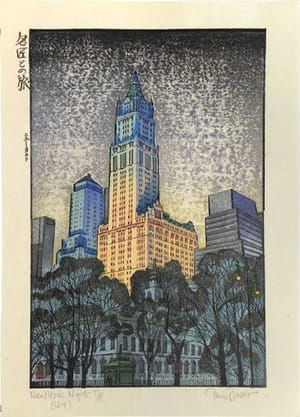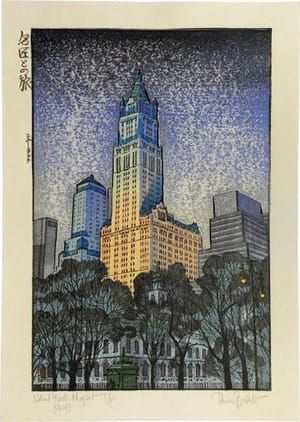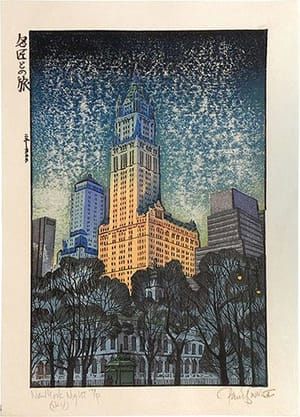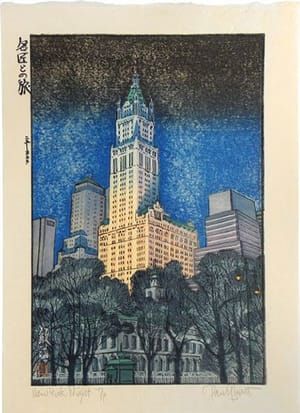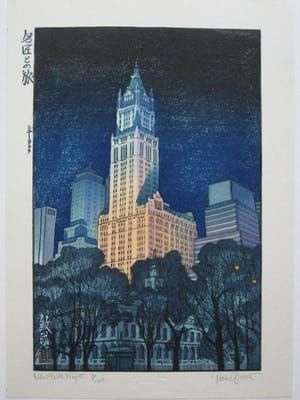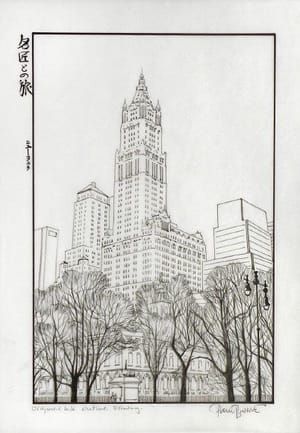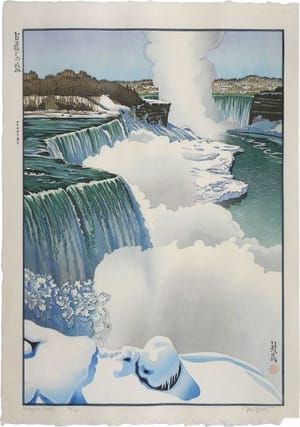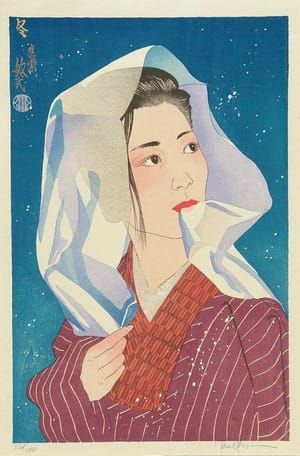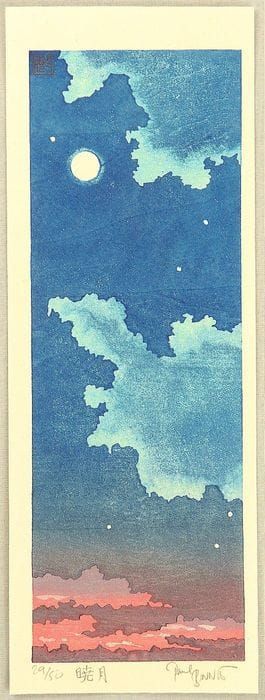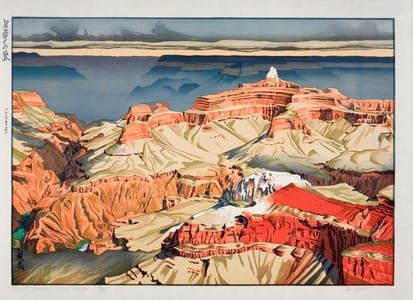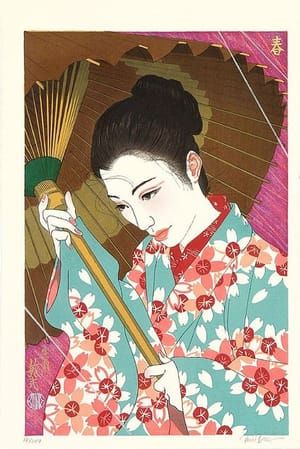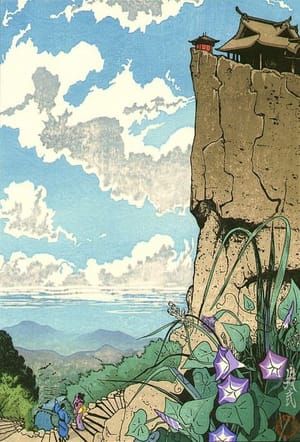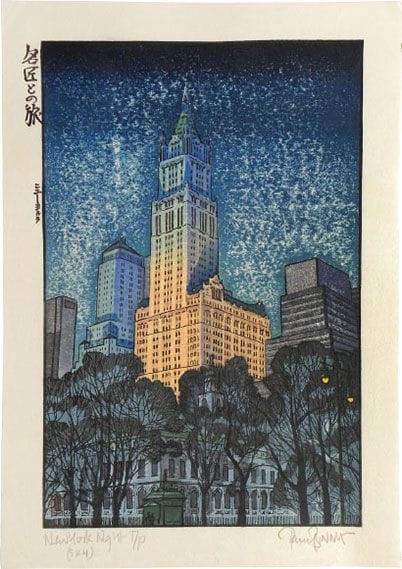

Travels with the Master: New York (Sunset to Night)
Paul Binnie
Creating a hanashita-e (outline drawing) is one of the techniques Binnie typically uses towards converting a composition from a drawing or painting into a woodblock print. (See added views.)
In 1998, Binnie felt he had accomplished what he could in Japan and that it was time to return to the West. This time, he moved to London and set up his own studio. As he gained momentum with his work on printmaking and as he continued to study and collect prints by earlier shin hanga masters, Binnie expanded his oeuvre to include landscapes and bijin (beautiful women). While his actor prints were largely concerned with capturing the emotion and intensity of the actor's role in a given moment, Binnie landscape and bijin prints often incorporate an art historical reference, usually to earlier well-known prints. He also returned to the tattooed figure subject with the series, 'A Hundred Shades of Ink of Edo', in which he applies designs from ukiyo-e prints by famous artists to nude figures.
This print, produced on commission by Scholten Japanese Art, is Binnie's most recent addition to his 'Travels with the Master' series. Hiroshi Yoshida (1876-1950) depicted a similar view of the Woolworth Building from City Hall, in a small chuban sized print in 1928. At the time, the Woolworth Building was the tallest building in the world (it would be surpassed in 1930 by 40 Wall Street and the Chrysler Building). As such, it was important to Binnie to capture the building's impressive height, which he accomplished by exaggerating the perspective to emphasize the sensation of looking up at the buildings as they seemed to lean together.
Both Sunset and Night prints, were created from the same set of blocks, with the addition of an extra shadow block to emphasize the dramatic lighting of the building from below at night. While the composition is largely based on Yoshida's version, the gradation of the dark blue to inky-black sky rendered in gomazuri (lit. sesame seed printing) is a deliberate reference to early landscapes by Kawase Hasui (1883-1957). In an amusing nod to the 'master,' Binnie replicated Yoshida's title of his print, Nyû-yoruku, although the transcription generally favored today is Nyû-yôku.
[https://www.scholten-japanese-art.com/japanese_prints_3-50.htm]
Uploaded on Apr 6, 2018 by Suzan Hamer
Paul Binnie
artistArthur
Wait what?

